I love finding new products to help the children learn to read. Yes, even though it was summer, we were still busy learning. We just finished up a month long summer session. During this time Harold and Hannah have been working their way through two different books from jollyliteracy.com (just2ducks LLC). The Jolly Phonics and Jolly Grammar set comes with 3 different levels in the Phonics books and 1 Grammar level. We have not yet gotten to the grammar book, but I will be sharing a little about it later in this review.
First, let me share everything we were generously sent by jollyliteracy.com.
I received the 3 Jolly Phonics Student Books (1, 2, and 3) along with the Jolly Phonics Teacher's Book in print letters. Also included was the Jolly Grammar 1 Student Book and Jolly Grammar 1 Teacher's Book in print letters. We also received the Jolly Songs book (in print letters) which comes with a CD. The student books are consumable and are for use by one student.
The teacher manual begins with a lot of important information for teaching Jolly Phonics to your child(ren). This first section goes into details on five skills:
- Learning the Letter Sounds
- Learning Letter Formation
- Reading (Blending)
- Identifying the Sounds in Words
- Tricky Words
Though these sections are explained separately, the first 4 skills are worked on at the same time in the lessons and Tricky Words are taught after a few weeks.
After explaining the program, the Teacher Book then goes into the color coded sections for each of the Student Books. Specific instructions are given for each lesson. These instructions will vary as the Student Books have different activities depending upon the level.
Instruction Page for Student Book 1:
Instruction page for Student Book 2:
We have been focusing on Book 1 and 2. Book 1 goes through each of the 42 main letter sounds, presented in an order that allows the child to build words as quickly as possible. The first 3 sounds are /s/, /a/, and /t/, so after just three lessons the child is reading their first words (at, sat)
The student pages in Book 1 are quite simple.
The pages that teach the sounds all follow the same format. There is a picture that the child can color. This picture has to do with the story that is told which helps the child remember the sound of the letter. You may wonder why there is a puppy for the letter "r." In the story the puppy is shaking the rug from side to side, saying /r/ /r/ /r/.
There is also an action the child learns to help remember the sound. This action is pictured and described at the top of the page. This comes directly from the story. In the above example, the child is taught to shake their head from side to side and say /r/ /r/ /r/, as if they are the puppy they just heard about in the story. I thought this was a unique way to have a child remember their sounds.
Then there are two lines of handwriting. The child will practice the new letter and then review previous letters. At the bottom of the page, there are words in a colored box that the child is to practice sounding out. The child is to place their finger on the dots under the letters as they say each sound, then they are to blend the sounds together to read the word. There are then four pictures for the child to say the name of and decide whether they can hear the sound in the word. They are to cross out the picture that doesn't have the sound in it. At first the sound is always found at the beginning of the word, but starting with the eighth lesson the child needs to be aware that the sound may be in the middle or at the end of the word. As you can see, Harold likes to circle the words that he hears the sound in.
This Student Book ends with a few pages of "tricky words," what we would call sight words, and some practice reading simple sentences that only include words that are easily sounded out with the sounds learned in the book and the 12 tricky words introduced.
Student Book 2 is a bit more advanced.
The child already knows the sounds from the first book. New rules are learned (such as the "y" at the end of a word saying /ee/ and the sound /ck/ being written with "c" and "k" in words containing short vowel sounds), as are more tricky words. The program now introduces the child to capital letters as well. There are various kinds of activities to help reinforce what was learned in the first book. The child will practice reading and writing words, both those that can be sounded out and tricky words. They will have activities to practice matching upper case to lower case letters. They will also practice writing the upper case letters.
Children will also have the opportunity to write a simple sentence or two (or more) in response to a picture.
All these activity pages allow the child practice with the sounds they were introduced to in Book 1. I've noticed there is a lot of work with recognizing the sounds in the words and what order they go in. The children learn to distinguish the vowels that are in the words.
Student Book 3 is even more advanced, with harder words and longer sentences. The end of the book has the child reading a story and answering questions.
How did we use this product?
My original intent was to use Jolly Phonics with Hannah, though I hoped to be able to use it with Harold as well. I'm sure you are wondering how I was planning on accomplishing this as these books are consumable. Well, I figured that Hannah would be beyond Book 1, so I could start it with Harold, while Hannah started with Book 2. This is exactly what we are doing.
I started out having Harold start in Book 1. He does already know the main sounds for all 26 letters of the alphabet and the letter names. He's known them for a while. My hopes for this program was that he could improve his blending skills and learn to read better. I also loved that he could practice his writing and spelling.
One of the activities Harold had to complete was dictation. I would say words and he had to listen for the sounds in the words and write some. Sometimes, instead of writing, he would get to use the Can Do Cubes from jollyliteracy.com. He loved being able to "build" words instead of having to write them. I will be sharing more about these cubes in my review later this week.
Harold is really enjoying his lessons. In fact, there are days he wants to finish 2 pages instead of the 1 I had scheduled.
As for Hannah, I had her start by working her way through the list of words in Book 1. We spend several days just reading the words in the colored boxes. She did a wonderful job with these recitations, so I knew she was ready for Book 2.
We don't work on the book every day of the week. When she has mommy time in the afternoon, we work on one page at a time, sometimes two. Sometimes the page has her writing her tricky words, a couple at a time. She needs to trace the words, and then she covers them and practices writing from memory. She also has dictation, where I read words for her to write. I love all the focus on working with the phonics and phonemic awareness through varied activities. She's not a huge fan of all the writing on some days, like with the dictation and story writing, but it is important to me that she gets this practice in. I may start letting her use the Can Do Cubes for some of her dictation, just to give her a change of pace.
Now, for a quick look at the Jolly Songs book.
Harold is really enjoying his lessons. In fact, there are days he wants to finish 2 pages instead of the 1 I had scheduled.
As for Hannah, I had her start by working her way through the list of words in Book 1. We spend several days just reading the words in the colored boxes. She did a wonderful job with these recitations, so I knew she was ready for Book 2.
We don't work on the book every day of the week. When she has mommy time in the afternoon, we work on one page at a time, sometimes two. Sometimes the page has her writing her tricky words, a couple at a time. She needs to trace the words, and then she covers them and practices writing from memory. She also has dictation, where I read words for her to write. I love all the focus on working with the phonics and phonemic awareness through varied activities. She's not a huge fan of all the writing on some days, like with the dictation and story writing, but it is important to me that she gets this practice in. I may start letting her use the Can Do Cubes for some of her dictation, just to give her a change of pace.
Now, for a quick look at the Jolly Songs book.
Each of the sounds taught in Student Book 1 is represented in the songs book. Most of the sounds have there own song (set to familiar childhood tunes), though there are a few songs that combine two sounds. In the songs where they are combined, they are also combined in the lesson. The song is related to the story the sound was introduced in. In the example I shared above, the /r/ is introduced with a picture of a puppy and the action is to pretend to be a puppy ripping a rag saying /r/ /r/ /r/. The song goes like this (to the tune of The Muffin Man):
See my puppy rip the rag.
/rrr/! /rrr/!
See my puppy rip the rag,
when he pulls so hard.
While singing the songs, the child is to do the action.
As you can see, the songs are quite short, just another fun way to remember the sound.
The main place we have listened to the CD is in the van, listening to all the songs together. When I was listening to them, I remember wishing the song repeated just once, because to me, they finished too fast.
In this book a child is introduced to early grammar skills and further spelling work with dictation. Children will learn more about sentences. They will learn about verbs, nouns, adverbs, adjectives, and more. I am thinking of using this after we are finished with Book 2. We will alternate our lessons throughout the week, one day using Jolly Phonics, the next using Jolly Grammar.
What did we think of Jolly Phonics?
What did we think of Jolly Phonics?
This is a wonderful curriculum for teaching a child to read, write, and spell. The lessons are short and the books are eye-catching and colorful. There are a variety of activities to complete, allowing a child to practice multiple skills in each lesson. Suggestions are given for further activities to help reinforce what is being learned. I love that it is multi-sensory; there are some great hands-on ideas.
Here's Harold working on the suggested activity of making snake shapes from play dough. After making a snake, I asked him to form an S, which he did with no problem.
I appreciate that lower case letters are focused on first as this is the way I was taught to teach a child their letters. We see the lower case letters much more than the upper case letters that are used primarily in names and at the beginning of sentences. I admit, I have always taught my children their upper and lower case letters at the same time, though we focus on the lower case first. For some reason Hannah has been writing more in capital letters. I'm not sure why, as I haven't taught her to do that. So, I have had to remind her continually to write in lower case letters during her lessons.
Now, if your child is struggling with writing, it may be better to allow the child to use different ways to build the letters (such as the Can Do Cubes, or even simple magnetic or foam letters). A child does not have to be able to write to be able to build words. However, I wouldn't neglect the writing sections completely. As I have mentioned, there are times I have Harold use the Can Do Cubes, but I still want him to practice his writing.
This is definitely a program I highly recommend.
Now, if your child is struggling with writing, it may be better to allow the child to use different ways to build the letters (such as the Can Do Cubes, or even simple magnetic or foam letters). A child does not have to be able to write to be able to build words. However, I wouldn't neglect the writing sections completely. As I have mentioned, there are times I have Harold use the Can Do Cubes, but I still want him to practice his writing.
This is definitely a program I highly recommend.
Don't forget to check out what my fellow Crew Mates thought of Jolly Phonics and Grammar. Just click on the banner below.





















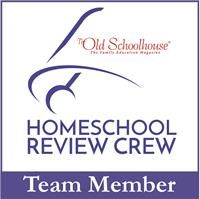
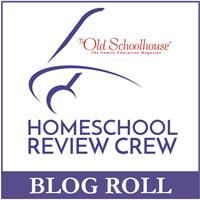














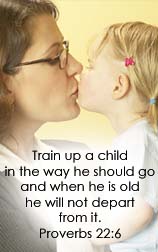



![[PREMIO2009.png]](https://blogger.googleusercontent.com/img/b/R29vZ2xl/AVvXsEjXD_Gx-wZ9EM5hXKrEYLksEBkYfRQtmb8VDVTDG_yyLggQoFIstZsh4zszdG20KqErZicRzEhiNYLty7j3IMXJYsABqkXjr8pp-ncj71xCbpxlXGbGpZq2fTuDQqq1RMKV4DPcDBnBViA/s1600/PREMIO2009.png)
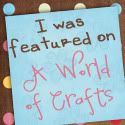
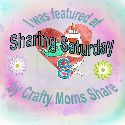


these look like they are really good at training. I love you put so many examples of the book on the post. It lets others know what they are like. Thank you for the post.
ReplyDelete